Nadir Maguet: The Mountain Athlete
- theoutdoorwall
- Dec 20, 2023
- 8 min read
Unveiling the story of Nadir Maguet, the mountain athlete who challenged the iconic Matterhorn record.
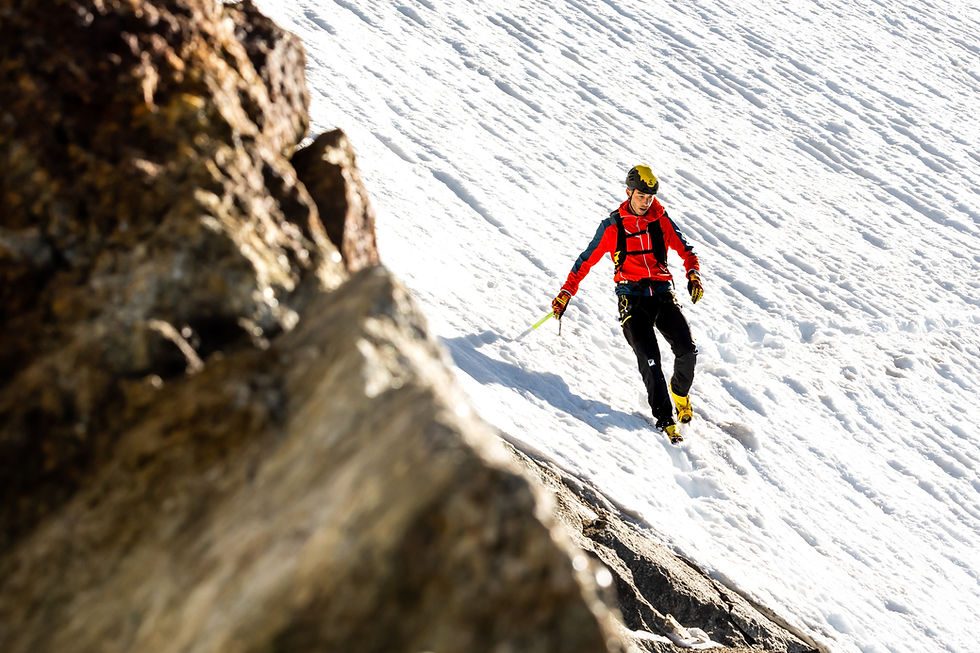
Professional athletes are often remembered for what they do when they race each other. Rivalries define careers. A medal can make you a hero for your country. But can an athlete be remembered for his stand-alone performances? Do you need a bib to be remembered?
On 22nd August of this year, the Italian skimo and trail running athlete supported by La Sportiva Nadir Maguet had the feeling that was possible. While approaching Breuil-Cervinia after the descent from the Matterhorn summit, Nadir heard the crowd cheering him and he realized he was doing something for the ages. When the clock stopped, Kilian Jornet won. The record he set 10 years before stood. Nadir beat Kilian on the descent, but he wasn’t able to close the gap opened on the ascent. As the news and images spread on the Internet, the mountain climbing and trail running communities buzzed around what Nadir did.
The Matterhorn record excites any person who loves mountaineering. It stands before races and competitions. Many dream about it, but very few can ever think of attempting it. It blends trail running, climbing, and mountaineering making it a North Star for anyone interested in alpinism. Nadir’s journey into FKTs [Fastest Known Time] started a few years back with successes on the Alpine arc, from the Grosslockner and Gran Paradiso to Grandes Jorasses and Piz Bernina. We sat down with il Mago [the wizard] to learn more about his evolution as a mountain athlete and what these attempts mean for him.
How did your interest in FKTs come about?
We call them FKT because they are unofficial records. In mountaineering, you need timekeepers to set official records. This is not easy to arrange because some records are arranged last minute based on weather conditions. The attempt can be in 1 or 5 days. Unless you set everything up, you can’t call it an official record. This is why we call them FKTs. For me, an FKT is worth a record.
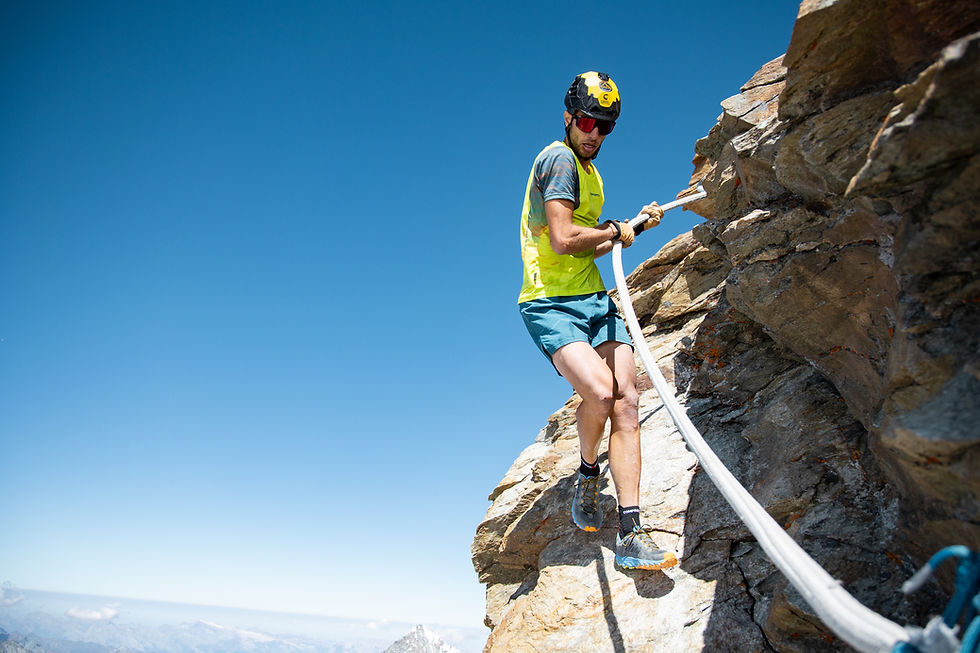
In the end, FKTs have always existed. It is only recently that this distinction was made. When you attempt an FKT you do everything to be as little as possible attackable from others. It is almost impossible to fake it today because we have watches and GPS tracks. For example, Gran Paradiso was an official record because it was certified by FISky through GPS. The three I did this year, Bernina, Hortless, and Grosslockner, are FKTs because I used my chronometer. If I want to have a certified record, I set it up that way. Sometimes I don’t feel I need it. For example, on the Matterhorn [Cervino] attempt, Marino Giacometti, the president of the International Federation of Skyrunning, I simply sent him the GPS track. He was there when Kilian set the record. It is not a record that you go there and you're the only one there that day. There are hundreds and hundreds of people. That was a record attempt, not an FKT.
Why did you decide to explore this side of the sport?
I have always been an athlete who needs to evolve not to get bored. Since I was a kid, I changed a lot of sports. Then, I found my passion for the mountains. When I started to run, I went from skyraces to trail marathons. In the meantime, I got closer to mountaineering through some of my friends. The alpinist François Cazzanelli is one of them. I already had the idea of attempting some records, but then COVID came. So, these two things gave me the spark that I was missing to start on these projects. I did Gran Paradiso during COVID then I stopped for one year.
Now, I decided to fit these projects into my season together with the races. It is a sacrifice because you must commit to these concepts by being flexible during the year. They are not like the races where everything is objective and you can measure your training and performance.
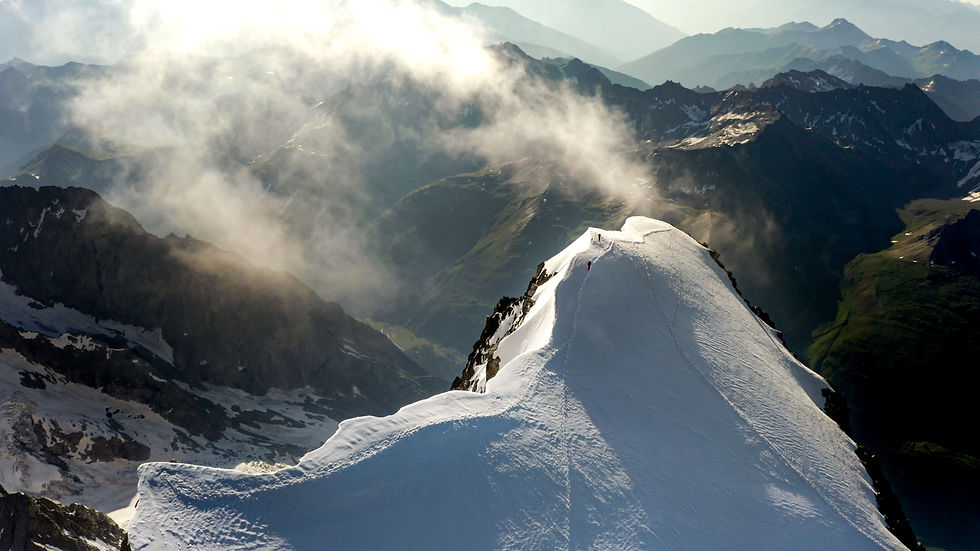
What is the lead time from concept to execution for these projects?
I can't quantify it in weeks or months, but it is a lot. The time goes hand in hand with your usual training. Succeeding in these projects is not just about your fitness, the mental level is very important. I consumed a lot of mental energy on the Matterhorn that I would have never imagined. During the build-up you need to trust your team to organize everything, so you don’t have to worry about all the aspects of the project.
Who are the members of the team?
The most important members are my family, girlfriend, and friends. Some are alpine guides and were on the Matterhorn during my attempt. Despite their jobs, they were able to find time to come and support me. When you have a staff that believes in your project, it becomes personal. Aside from the performance-related team, there is the content creation, from video to photo. The project needs to be successful in all its components.
Could you walk me through the process you follow to prepare one of your FKTs?
There are two different ways of approaching these projects. For example, the Grandes Jorasses was fast. I already knew the route. I had more margin on the previous record, so the preparation didn’t take too long. When I heard that the conditions were favorable, I did a recognition to identify the best route. Then, a few days after I did it. In the end, I don’t need to follow specific training for ascending FKTs. These are like a VK with a technical part at the top. Even though they are easier to approach, I do everything I can to curate all the details. I want to be an example of how you experience the mountains.
On the other hand, the Matterhorn was completely different. There is almost no margin on the current record. It can go well or bad. The tough part is catching the right weather conditions. Due to the high elevation and exposure of the route, it takes a long period of high pressure to melt the snow at the top and get dry conditions. This period sometimes arrives in July, sometimes in August. So, your physical form needs to be at the top from the end of July to late August. In this phase, I keep monitoring the weather conditions. This year, the time window arrived on the third week of August, but my fitness level peaked at the beginning of the month. At that time, I couldn’t attempt the record because the conditions were snowy and cold. So, the wait made my fitness level drop.
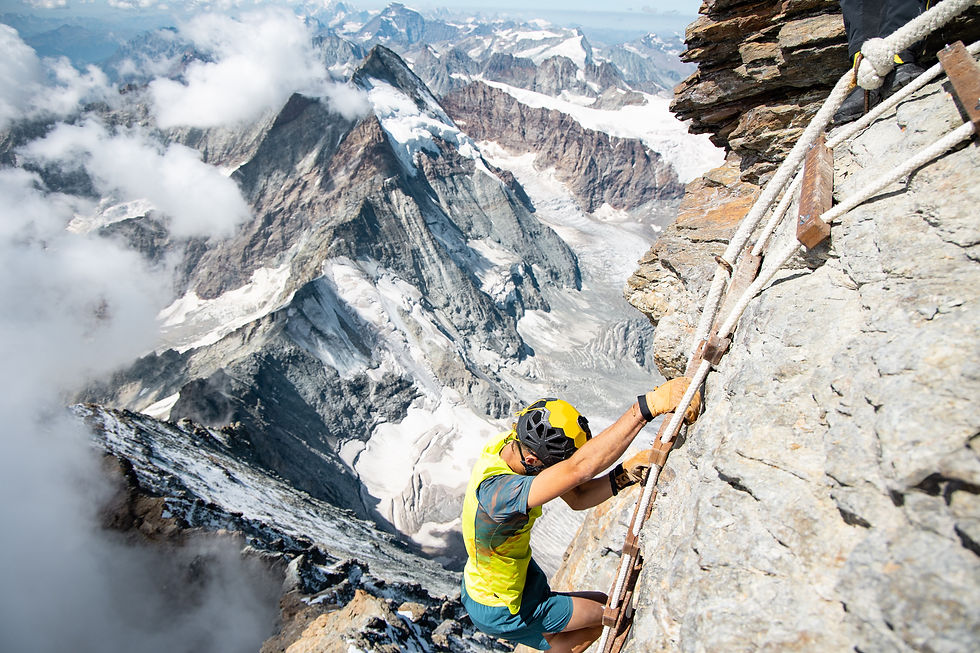
This process consumes a lot of mental energy. You never know when the time window will come so you just keep waiting. It is not more than 3-4 days usually. While waiting you need to keep managing your team making sure they will be ready when that window comes. On the day of the attempt, you need to have everything set.
What did this record attempt bring to your career?
At the end of the day, it was an unexpected image return. I thought that if it had gone well, it would have been an atomic bomb from a media point of view. It didn’t go that way, so I was surprised to see the buzz around. I would have taken the record from Kilian [Jornet] who is the best of all time. So, this increased the relevance of the attempt. It is the record of the records.
I think that these personal projects are a way for every athlete to tell his own story. You define your own identity as an athlete.
These kinds of projects could open controversies among the mountaineering community. Did this happen to you after the Matterhorn?
The classic mountaineer sees mountaineering as the only way to go to the mountains to enjoy all the beautiful moments. The idea of going fast is not there at all. The mistake is associating speed with danger and death. From the moment you start mountaineering, there are objective dangers, whether you go fast or slow.
In my opinion, apart from the record attempts that come with higher risks, the fast and light approach is synonymous with safety. Fast and light is not necessarily going by yourself, because you can be with a friend who is just as trained and experienced as you. Generally, you move faster and you spend less time on the mountain. So, you are less exposed to the dangers. The record attempts are exceptions where you accept the risk of it.
With this said, I thought the response was positive. The thing that surprised me the most was how many people texted me saying they were inspired by what I did. This was important to me. My project and the Matterhorn record mean something to many people. Shortly after the attempt I travelled to Chamonix to race OCC. While I was at a bar, the barman started to talk about the guy who attempted the Matterhorn record and how the local mountain guides were following it from his bar. I told him That was me! The record is not followed only by those passionate about running or mountaineering, but it is something that everyone talks about.
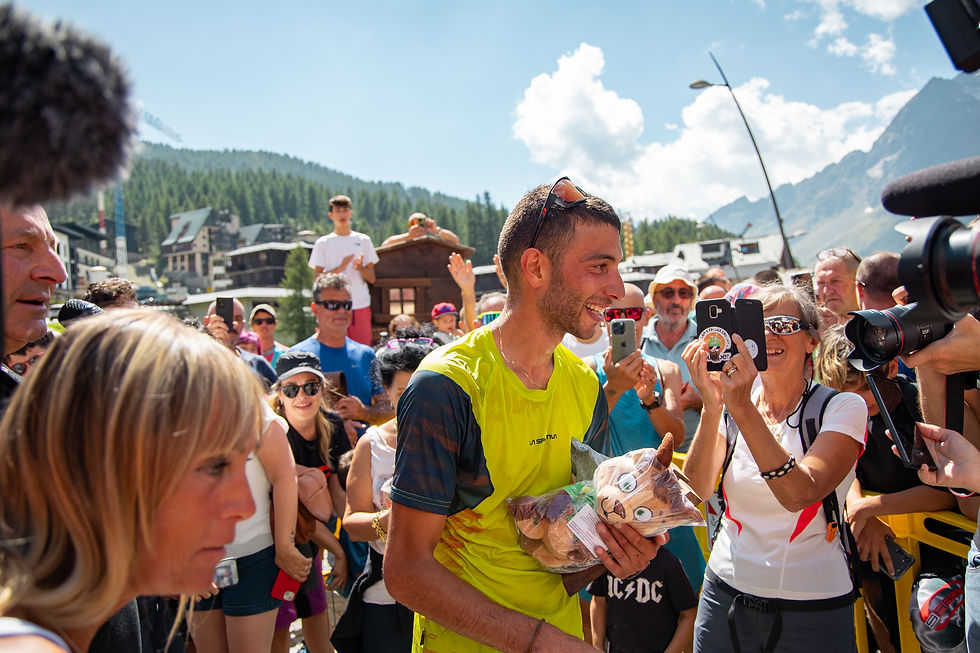
When you ventured into the world of FKTs, which skillset did you have to develop?
I had to improve a lot in the way I prepare things. Because in a race you have a set date that you plan towards on your training plan. If you perform well, it is great but if not, it is still ok. While with these projects it is everything about you. You must get to the day of the attempt that everything is perfect, from your fitness level to the content creation. You can't go wrong. Let’s say the drone operator is not there, then the project is already losing something. All this made me more methodical.
Then, as I said previously, the mental aspect is crucial. I had to work a lot on this. You are not racing anyone, just the time. If you have the right mindset in a project like this, you can become unbeatable.
How was the Matterhorn mentally?
It was devastating. Shortly after I started, I felt it wasn’t a good day. I struggled a lot on the ascent but I never thought of stopping because it was a moment I waited for years. Also, I didn’t want to quit for all the people who worked on this project and the ones who showed up to cheer.
On the last push to the summit, I heard my friends talking over the radio about how beaten I looked and if I should approach the descent or stop there. In a record like this you must know perfectly where you put your feet, you can’t have a missed step. At the top, Francois [Cazzanelli] stopped me and asked me if I was sure about going down. Something turned in at that moment. I started the descent and I felt well. I thought I had to go down with the handbrake pulled, instead, I felt super comfortable. I was focused. I wanted to show myself that it was doable. I beat Kilian’s time on the descent. Now, I know that on a good day, I can do it.
Are there other FKTs that appeal to you besides the one related to mountaineering?
Not right now. I will focus on uphill or uphill and downhill. Some projects might be longer or involve ropes, but the approach will always be the same, fast and light. I've seen some FKTs that involve more running, but I feel that people force them sometimes. They link a few key areas and create their own FKT.
Do you consider yourself a 360-degree mountain athlete?
In my sporting career, I reached a point where I know exactly the path I want to take, not in the next three years, but for my whole career. Until this year, I was an athlete like many others. I tried many different things without finding my way. Now, I have a clear idea of what I want to do. It is a lot. I want to be remembered in the years to come. I want the next generation of runners and mountaineers to remember me. Pure athletes could have amazing careers and be forgotten the moment they stop competing. I want people to talk about me like they talk about Bruno Brunod and his Matterhorn record [Brunod set the Matterhorn record in 1995].
Will you attempt the Matterhorn again next year?
Yes!



Comments